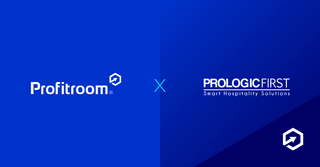Maximizing hotel revenue management — space expert strategies for success
Date
06.05.24
Type
Articles
Category
Revenue

Maximizing revenue is a top priority for business owners in the highly competitive hospitality industry. As the market evolves, driven by changes in traveler behavior, technological advancements, and economic fluctuations, hotels must adapt and refine their approaches to stay ahead. Revenue optimization and management involves a complex interplay of pricing methods, market analysis, demand forecasting, and inventory management. Leveraging data and analytics allows hoteliers to make informed decisions that drive revenue growth and improve overall performance. This guide delves into the intricacies of HoReCa revenue optimization, offering expert strategies and best practices to help you succeed in this dynamic field.
What is revenue management?
Revenue management means boosting profits through data-driven pricing and inventory management. It involves understanding demand, seasonal room availability, fixed costs, guest behavior, and low and high-demand periods to plan a well-informed revenue strategy. It is a cornerstone of the hospitality industry as by strategically adjusting prices and managing rooms, revenue managers can maximize their revenue potential and sell the right room to the right customer at a suitable time for the fitting price. This approach ensures hotels can generate more revenue, minding fluctuating demand and competitive pressures.
Why is revenue management important?
It is critical for hotel profitability, as it can significantly impact a hotel’s bottom line. It allows hoteliers to make the most out of a perishable inventory of hotel rooms, maximizing hotel room revenue. Moreover, an effective revenue management system enables hotels to understand their market, tailor their offerings, and make strategic decisions that enhance overall hotel performance.
Revenue management vs yield management
Revenue and an approach called yield management are two tools used to maximize profits, with similarities and differences. Yield management focuses on boosting revenue from a fixed capacity, while revenue oversight considers the entire revenue stream and encompasses broader financial strategies, including ancillary revenue streams like food and beverage, spa services, and more. In essence, yield optimization can be perceived as a subset of profit management.
Important forecasting tips
Accurate forecasting is the backbone of effective revenue administration. Revenue management software in the hands of experienced hotel revenue managers enables hotels to predict future demand, set appropriate prices, sell rooms, and allocate resources efficiently.
-
Keep accurate records – accurate records, including tracking occupancy rates, number of rooms, revenue, customer demand, rates, and other KPIs, are essential in for-profit management. Detailed historical data provides a foundation for making informed predictions about future demand and revenue.
-
Make use of data – performance data is invaluable for forecasting future demand. Analyzing past trends allows revenue management professionals to identify patterns and anticipate high and low-demand periods. This information is crucial for hotel administration and setting variable pricing strategies to get incremental revenue during peak periods and stimulate demand during slower times.
-
Take events and holidays into account – events and holidays should be factored into forecasting and revenue management tasks. These occasions often lead to spikes in demand, and understanding their impact allows hotels to adjust pricing and inventory strategies to capitalize on increased bookings.
Revenue Management Strategy Insights
Here are our tips for hotel business profit management.
Get to know the hotel market
Understanding the hotel market, including target audience, competition, and local factors, or airline industry state is crucial to tailor revenue management techniques to attract and retain guests.
Incentives for direct bookings
Offering incentives for direct booking can increase revenue and reduce distribution costs. Such bookings through the hotel’s website avoid the commission fees associated with online travel agents and strengthen customer relationships.
Segmentation and price optimization
Different market segments, such as business travelers, leisure tourists, and group bookings, may have distinct preferences and willingness to pay. Segmenting customers and setting own pricing strategy based on their behaviors and booking habits can maximize revenue.
Revenue Management Price Strategies
Here are the top price strategies.
Dynamic pricing strategies
It involves changing room rates regularly according to market demand. It is a key strategy for revenue optimization in the hotel industry. Adjusting prices based on factors like how many rooms, occupancy levels, competitor pricing, and seasonal trends can boost total revenue management results.
Open pricing strategies
Open pricing refers to establishing different prices for reservations made by guest segments at various times through different distribution channels.
Length of Stay (LOS) Strategies
The length of stay strategy involves pricing based on the duration of the visit. Independent hotels can offer discounts or incentives for longer stays, encouraging guests to extend their visits and generate revenue.
Customer segmentation
Customer segmentation is an important part of marketing and pricing, allowing hotels to define groups of travelers that visit their hotel and address them differently. Segmentation can be based on market conditions, booking behavior, demographics, travel purposes, to create targeted marketing campaigns and pricing.
The role of a revenue manager
A hotel revenue manager has a long list of responsibilities that largely match the main elements of profit management. These include analyzing market data, setting price strategies, forecasting supply and demand, selecting the right distribution channel, and optimizing overall revenue generated.
KPIs in hotel management
Key performance indicators (KPIs) are crucial for measuring effectiveness. Some of the most important KPIs in hotel profit management include:
-
GOPPAR (Gross Operating Profit Per Available Room) – this metric analyzes available rooms, revenue, and expenses to measure a hotel's financial performance.
-
TRevPAR (Total Revenue Per Available Room) – TRevPAR measures total revenue by possible book room units, including ancillary revenue streams.
-
NRevPAR (Net Revenue Per Available Room) – net profit by functional room, excluding distribution costs and commissions.
-
EBITDA (Earnings Before Interest, Taxes, Depreciation, and Amortisation) – such a metric measures overall profitability, excluding non-operational expenses.
Implementing revenue management strategies
Implementing an effective hotel revenue management strategy requires a combination of best practices and innovative techniques. Some key best practices include the following.
Shift to profit management
Hospitality revenue management is moving towards strategic profit management. This approach focuses not only on optimizing revenue and profitability.
Using data analysis and predictive analytics
Data is the foundation for effective business operations. Analyzing data on cancellation rates and denials can predict occupancy rate levels and room prices. Predictive analytics allows hotels to anticipate future trends and adjust their strategies accordingly.
Channel and overbooking management
Channel management influences revenue by preventing overbooking and managing customer bookings from various sources. Effective channel management ensures that room inventory is accurately reflected across all sales channels, reducing the risk of overbookings and optimizing revenue opportunities.
Driving direct reservations
Those increase RevPAR and remain an effective distribution channel. Encouraging guests to book directly through the hotel website reduces commission fees and builds stronger customer relationships.
Mobile-driven booking
A mobile-responsive website is essential for this category of customers. Hotels must ensure their website and booking engine are optimized for mobile devices to capture this market segment.
Generating ancillary revenue
Ancillary revenue can be generated through additional services and products. Offering dining experiences, spa treatments, and guided tours enhances the guest experience.
Dynamic packaging
Dynamic packaging involves offering customized packages to guests based on their preferences and behaviors. This approach may increase booking value and attract more guests.
Launching loyalty programmes
Loyalty programmes can increase repeat business and drive revenue. Points, discounts, and exclusive offers boost customer loyalty and encourage repeat bookings.
In conclusion, maximizing hotel revenue management requires a comprehensive approach, understanding the principles of revenue management, implementing effective forecasting techniques, and employing innovative price strategies.


